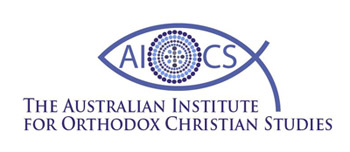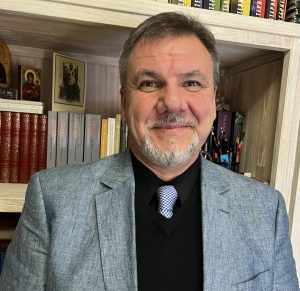If there is something representative of modern mentalities, it is compartmentalisation. The impact of this feature reaches far and wide, from personal worldviews to academic standards to economics to politics. In short, compartmentalisation follows analytical principles, attempting to understand by breaking the objects to pieces, without concern for, or sensitivity towards, the whole. It is, simply, “missing the forest for the trees.” We count the trees but fail to see the forest as something more than the individual trees. And then we cut the trees to “develop” the place, without realising that we work towards our own extinction, not only koalas’.
Faith, Science, and the Plight of Nature
The signs of this way of thinking are visible everywhere, especially in the incapacity of many people to bridge items that belong to different worlds, as it were. Relevant here is the inability to think inclusively when it comes to faith and science. Most people believe that faith and science exclude each other and cannot be bridged. So do many Christians, too.
Less obvious situations betray the same compartmentalising mindset. For instance, some Christians are committed to the doctrine of creation but remain indifferent to the plight of nature, God’s creation, caused by irrational industrial exploitation. They juggle with their faith in creation and the careless investment in the destruction of nature, not connecting the dots. This is not an either/or situation, as with the opposition of faith and science, but it’s not a happy one either. Here, faith in creation amounts to an ideological stance unable to inspire corresponding practical attitudes.
As the culture of compartmentalisation proves unhelpful, Christians could learn wisdom from history. Here is one lesson.
An Early Christian Model
Clement of Alexandria (d. ca 215) was a Christian philosopher, an interpreter of scripture, a priest, and a teacher. A changed man himself, he encouraged his students to think differently about reality (see the “change your mind” exhortation, at Matthew 4:17, rendered etymologically) by keeping all things together, not by compartmentalising. He knew that all things are called to unity (Colossians 1:17; Ephesians 2:14). He devised, accordingly, a contemplative method that emphasises the commonality of things, beyond their distinctiveness. The trees and the forest, so to speak. The following account summarises various passages from Clement’s works, primarily the Miscellanies.
The method begins with the believers gathering sound scientific information about the objects under consideration. After learning whatever they can, they interpret the findings from the viewpoint of faith, by referring to scriptural passages or the congregation’s worship, for example. Then, with God’s grace and depending on their purity of life, they advance towards a divine—Christlike—insight. Conversion enables them to think like Christ (1 Corinthians 2:16; Philippians 2:5) and, under his guidance, they advance to a comprehensive view of reality, beyond analysis (see Miscellanies 6.9.78). This last part of the method is a tough cookie; this is where my “competence” fails; but the rest comes easy after a while.
How Does It Work?
Let’s give an example. Take the harmony of the ecosystem, God’s creation. The environmental sciences tell us that cooperation is the way nature works. Things play a non-zero–sum game. All things do their bit for the good of all things, and do so together, regardless of how strange some situations appear to demure onlookers. What matters is that the rule of life is not the zero–sum game of irrational competition and senseless killings, the “survival of the fittest.” While a careless eye sees only competition, conflict, and violence in nature, the contemporary sciences bring to the fore its harmony and balance. Cooperation, not competition. The sciences are useful, therefore, to dispel ignorance about reality.
Clement reached similar conclusions by deploying tools from Aristotelian physics, Galen’s medical research, and the Ptolemaic astronomy that emerged during his lifetime. He described four kinds of scientific approach, whose elements a seeker of truth should apply consistently (see Miscellanies 2.17.76). What Clement found is that “within the cosmos as a whole, the totality of the parts both differ from one another and preserve their relationship with the whole” (Miscellanies 1.13.57).
Moving on, Clement’s contemplative method requires the effort to translate nature’s beauty and harmony from the viewpoint of faith. This leads believers to understanding, enrichment of life, and the correction of errors. To that end, Clement uses the congregation’s choir and hymns as analogues of nature’s harmony (see Exhortation to the Gentiles 1). Thus, the congregation’s song requires the singers to follow the choirmaster, to pick up the tune, and to be mindful of the whole choir. The same goes for nature, which “sings its song” under the Choirmaster’s direction, with the participation of all, and for the benefit of all.
We can do the same to interpret the current scientific description of the world. We can express the harmony of the environment by referring to Psalm 19 (LXX 18):1–4 or by comparing it to the fellowship of believers. Thus, in nature all things work as the members of a choir do. All things hold together as we, Christians, do. Likewise, we can make the point that our choir should be like nature, where all things cooperate for the life of all. In so doing, we learn from nature, God’s creation, and we deepen our appreciation for it.
These first two steps obviously bridge the worlds of science and faith. They do so effortlessly and with great profit for all who follow this method. This method is not about asserting the superiority of faith over science or of science over faith. It is about establishing their competence and acting upon this realisation. Science analyses, counting the trees and describing them. Faith synthesises information, interpreting the trees as part of the forest.
Concluding Thoughts
The last step of the method, to reiterate, exceeds my pay grade. To see divinely means being in God’s proximity, and I’m not there yet. Nevertheless, Clement speaks of advanced believers who know what things “are, will be, and have been,” as well as “how they are, will be, and have been” (Miscellanies 6.7.61). This sounds incredible, but he is serious about it. I believe him. Other sources confirm the possibility of this insight. For example, during a trance, Columba perceived the whole cosmos “unified as a single ray of the sun” (Adomnán of Iona, Life of Columba). This comprehensive insight is not the outcome of analysis and interpretation. One needs to become what one sees in order to see anything at all—so it goes about seeing the Lord (Colossians 3:4; 1 John 3:2), so it goes about this divine insight into reality.
Such a view of reality, divine and insightful, can enable us to transcend the culture of compartmentalisation and divisions fully, including ideological faith convictions. Until then, we take comfort in practising the first two steps of the method, making sense of things at the crossing of faith and science. By embodying our faith in a corresponding way of life, we might give a chance to trees, forests, koalas, and ourselves—to escape “development,” read the spectre of extinction.
Acknowledgment: A shorter version of this essay, heavily redrafted by the editor, was published in The Melbourne Anglican of 15 April 2024, 20-21.
15 April 2024 © AIOCS
Please support our not-for-profit ministry (ABN 76649025141)
For donations, please go to https://www.paypal.com/paypalme/aiocsnet or contact us at info@aiocs.net

 by
by